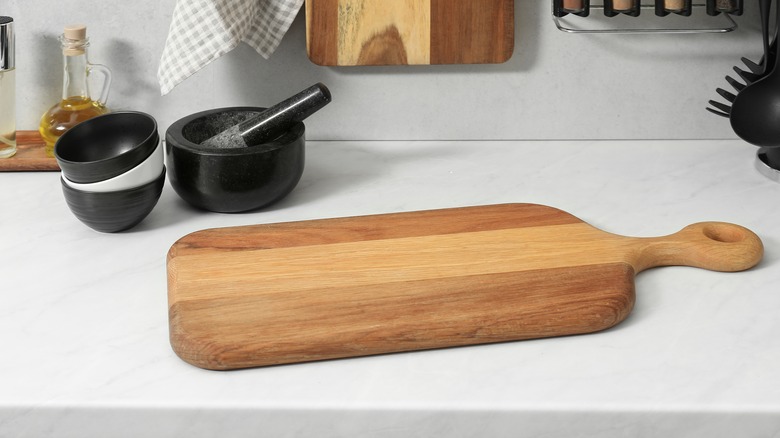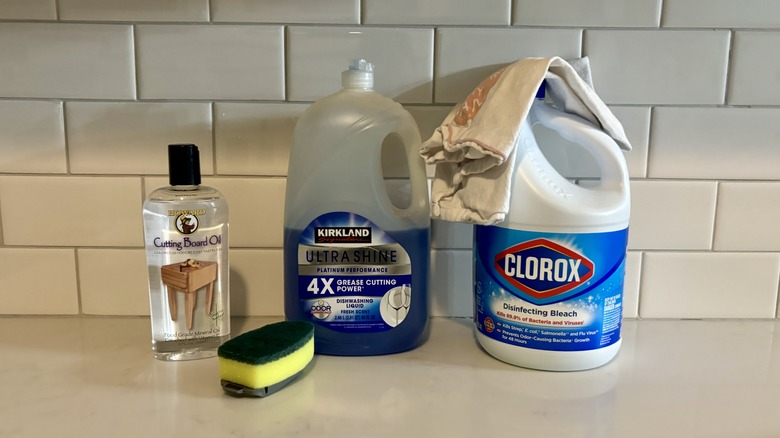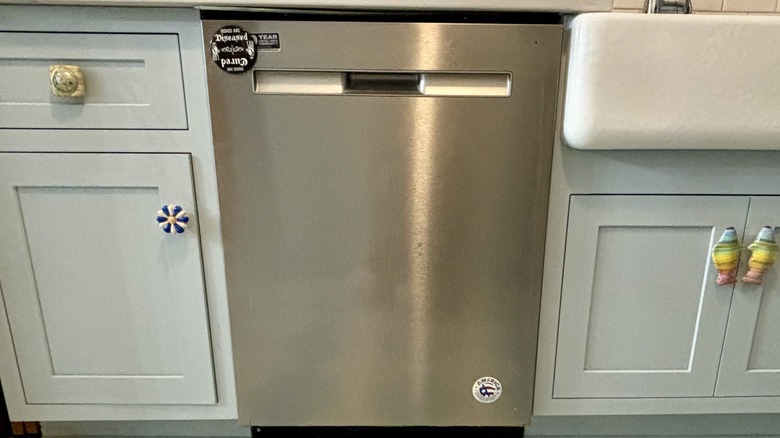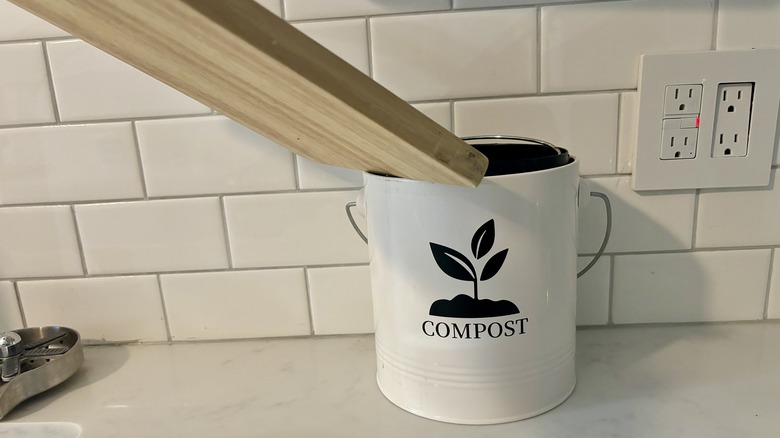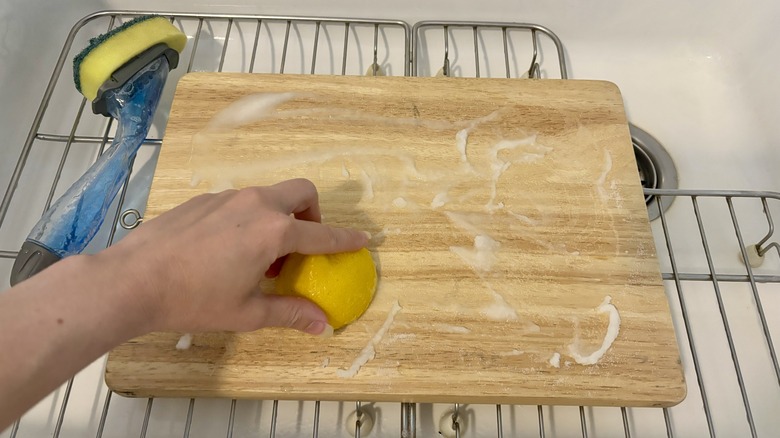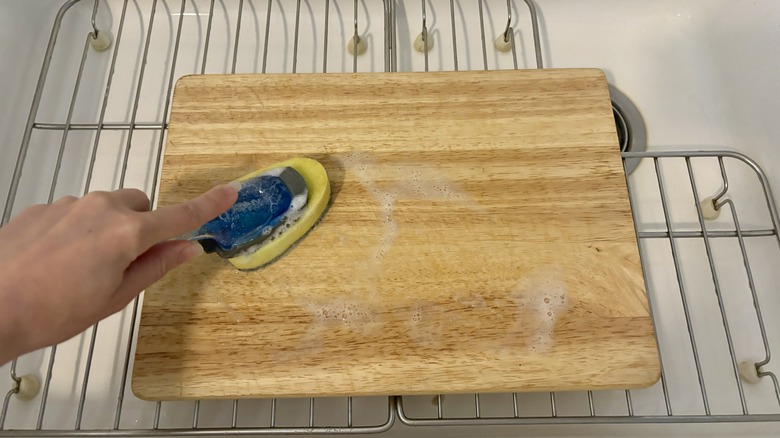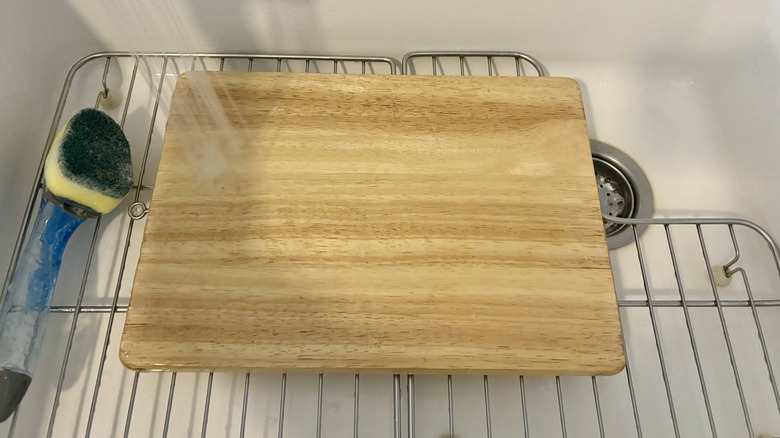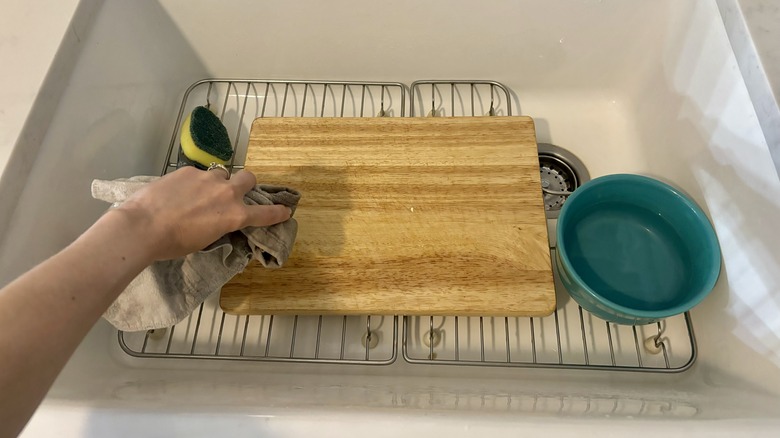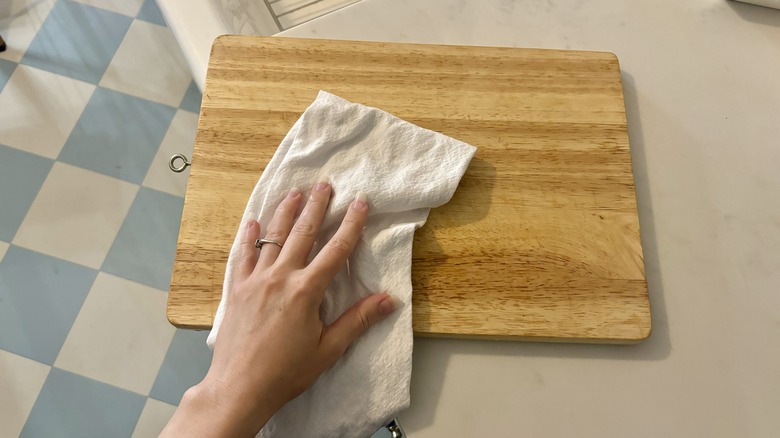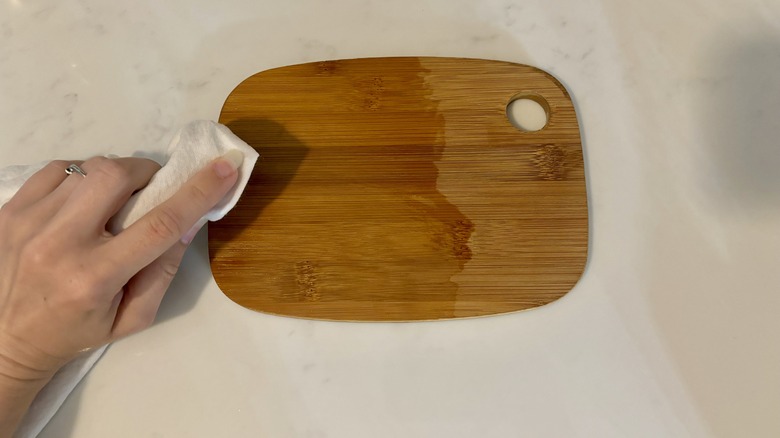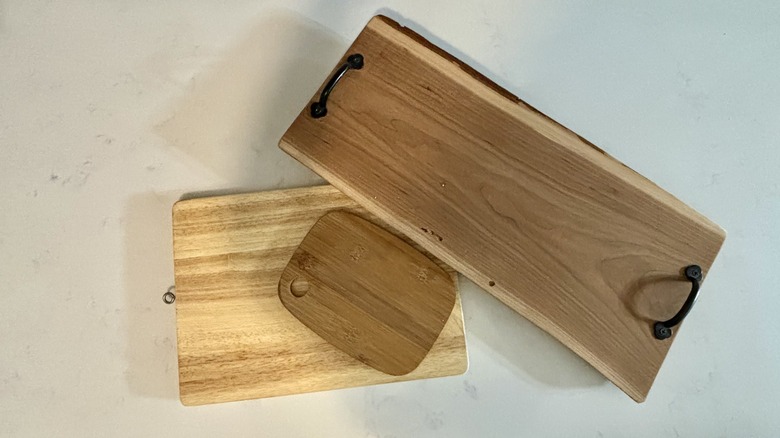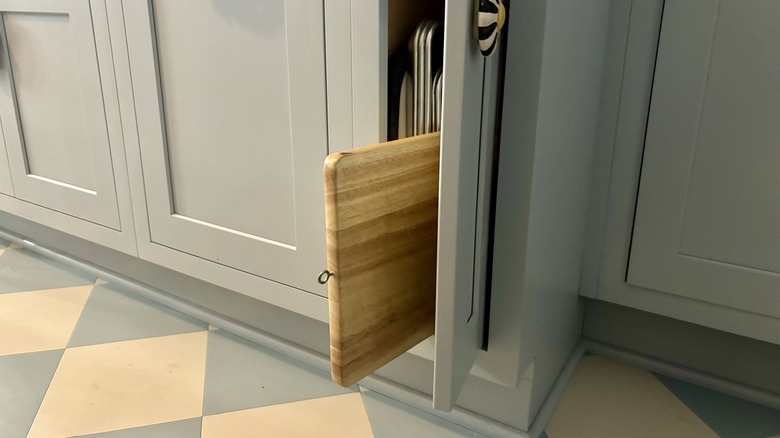How To Clean A Wooden Cutting Board So It Doesn't Warp
There are many benefits to using a wooden cutting board. They are gentle on knife blades and will not quickly dull like stone cutting boards do, nor will they leave small pieces of plastic in your food as plastic cutting boards do. And they are just generally beautiful natural elements in any kitchen. Just ask Ina Garten And Giada De Laurentiis about the luxury cutting board they swear by. Wooden cutting boards have gotten a bad reputation recently, though — and not the fun Taylor Swift kind.
It is true that wooden cutting boards take a little more effort to maintain than some of their counterparts. You can't put them in the dishwasher, for example. However, they are not all that much more work to clean.
There have also been rumors that wooden cutting boards are smelly and unsanitary breeding grounds for bacteria. This is true of any surface used for food preparation that isn't cleaned properly. There is even some research that shows that a properly cleaned wooden cutting board can be better than a plastic one, as wooden cutting boards don't get as deep of grooves in them. Your wooden cutting board is a valuable asset to your kitchen, and we will show you how to clean it so it doesn't warp.
What tools you will need
All you will need to clean your wooden cutting board is some dish soap, a sponge, and a cloth. The cloth should ideally be low shedding but absorbent.
If your board is particularly dry or has not been treated in a while, you will need an additional clean wash cloth and some food-safe wood oil. We used Howard's cutting board oil and have had good results. Additionally, if your cutting board seems to have some lingering scents or you cut something particularly potent, you will need some salt and a lemon.
There is some debate about whether you should use bleach on a wooden cutting board. Some people feel a diluted bleach mixture is fine. That said, bleach is incredibly useful for disinfecting. It is important to note that you should never mix lemons and bleach. Use one cleaning method or the other, not both.
What not to do
The number one thing not to do is submerge your wooden cutting board in water. It will get wet during this process, but submerging your cutting board in water can cause it to swell, distort, and weaken altogether. There should never be a time when you need to put a wooden cutting board directly into the water. On this same note, do not load it into the dishwasher. Wooden cutting boards cannot withstand moisture and heat.
Scrape off big chunks
The first step in the cleaning process is to use a knife or a bench scraper to scrape off any big chunks of food. This can be peels, pits, cheese rinds ... anything that you were cutting on the board. The more of this you get off, the easier cleaning the board will be.
Optional: Rub with salt and lemon
This step is optional. However, it can be useful if you notice a smell coming from your board. Sprinkle a generous amount of salt on the board. Take half a lemon, squeeze out some juice, and rub the cut side of the lemon against the board. Allow the board to sit for at least five minutes.
Wash with soap and warm water
Soak your sponge in hot water. Apply a small amount of soap and wipe down your board. Rinse off in between to ensure all food debris has been removed.
Rinse your board
Gently rinse your cutting board with warm water to remove all soap residue. Do not submerge the wooden cutting board in water or you risk it becoming warped. Use running water to rinse only.
Sanitize
As a reminder, do not use this bleach option with the salt and lemon option. Pick one or the other, as putting lemon and bleach together will create toxic gas. Mix two tablespoons of bleach with one gallon of water. Either spray the surface of the board or use a cloth to wipe the solution across the surface. Allow to sit for 10 minutes. Make sure you do both sides.
Dry off your board
Using a towel, wipe or pat the cutting board to remove as much water or moisture as you can. Prop the board to upright, allowing air to circulate around both sides, so that the board can finish drying.
Optional: Add oil
If your cutting board has taken a lot of use and is looking dry and dull, apply oil. Take a small amount of food-safe wood oil and apply it to your cutting board. Using a clean, dry cloth, wipe the oil over all surfaces on the board to restore moisture to the wood.
How often do you need to clean your cutting board?
You should clean your cutting board after every use. With regular use, you will likely need to sanitize your cutting board once a month or every other month. However, if you use your wooden cutting board for preparing meat, it is important to sanitize the cutting board after every use to avoid spreading harmful bacteria. This would be a time to use a diluted bleach solution, even risking some discoloration.
How to store your cutting board
Wood can be susceptible to several problems, including cracking and warping. To keep your board in the best shape possible, store it upright. Ideally, try to keep your boards away from warm places, such as near the stove or above a refrigerator. Additionally, make sure your board is stored in a dry place so that moisture does not cause the wood to swell or distort.
